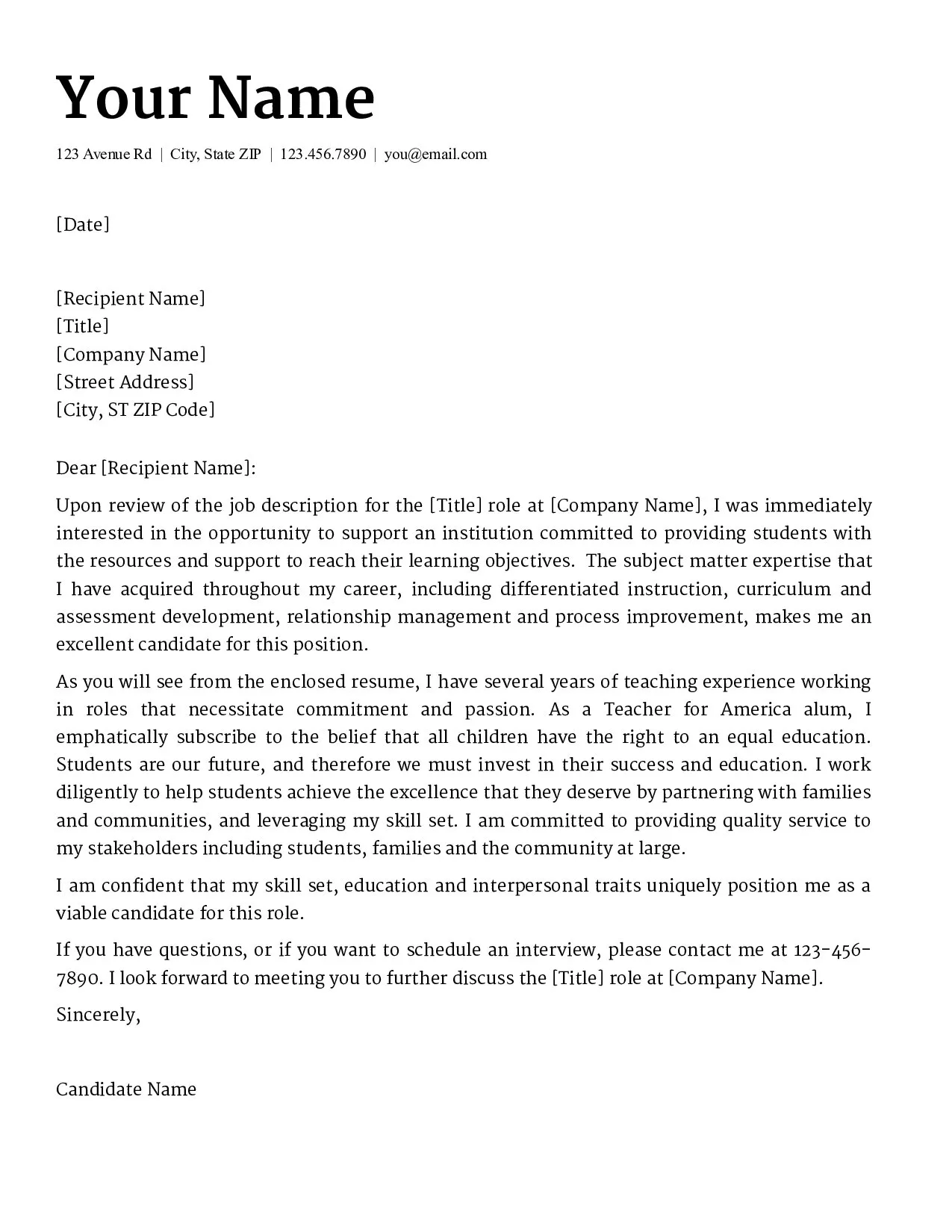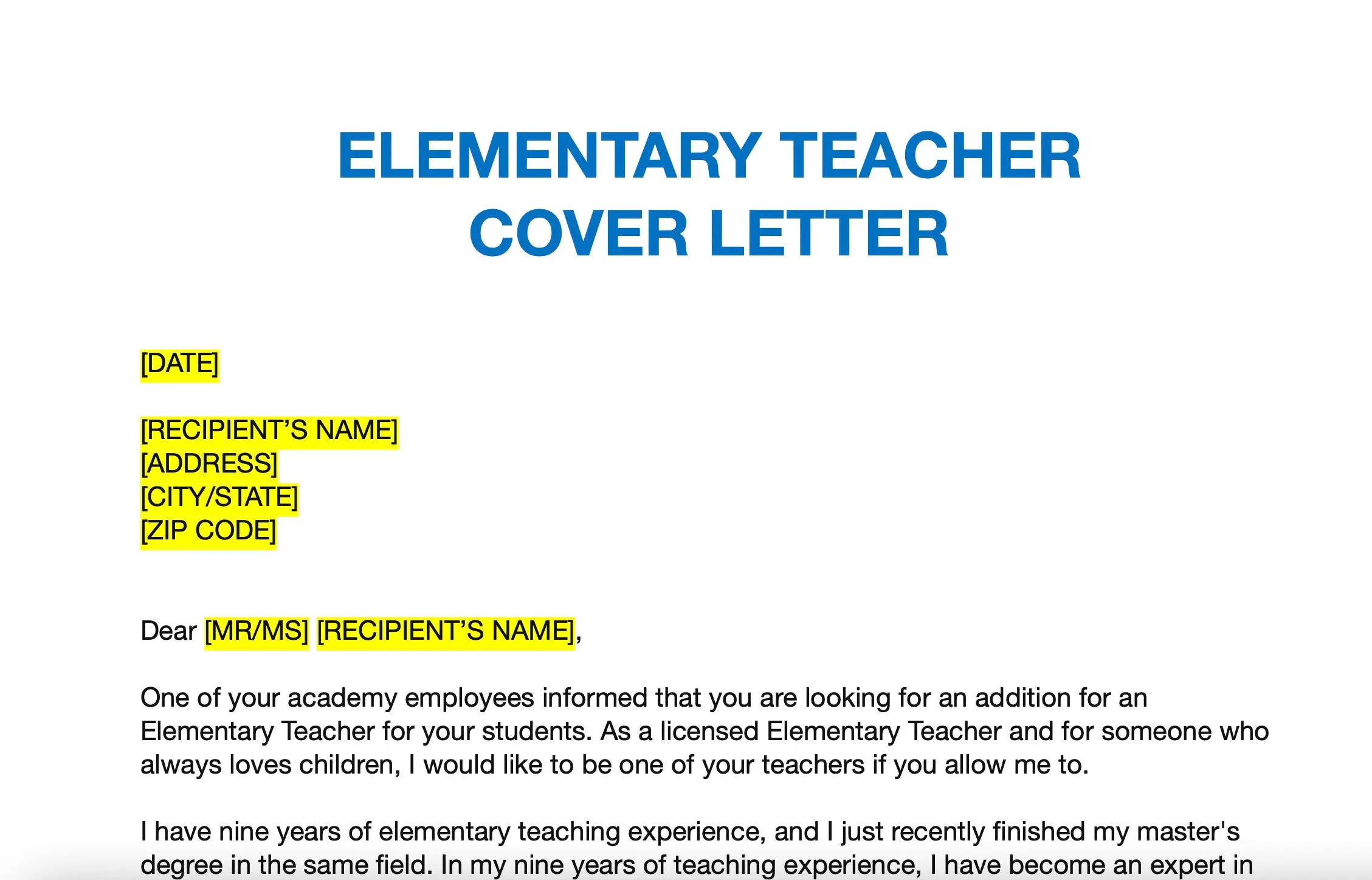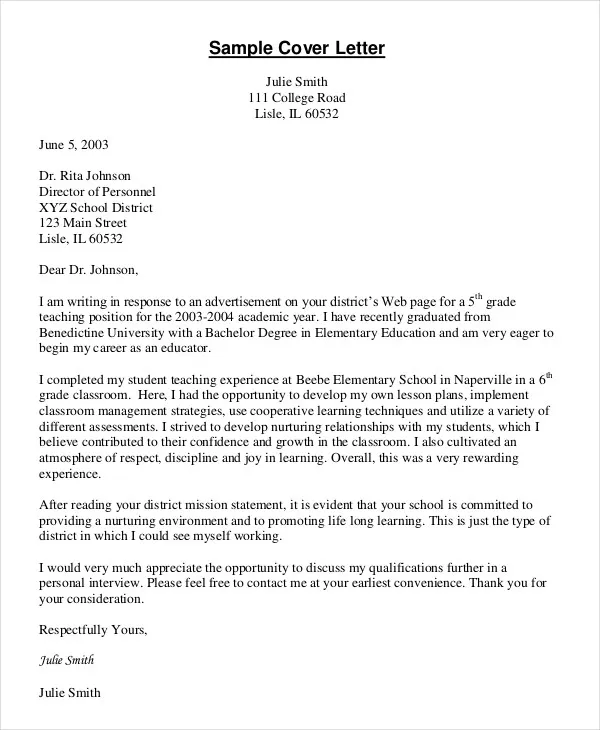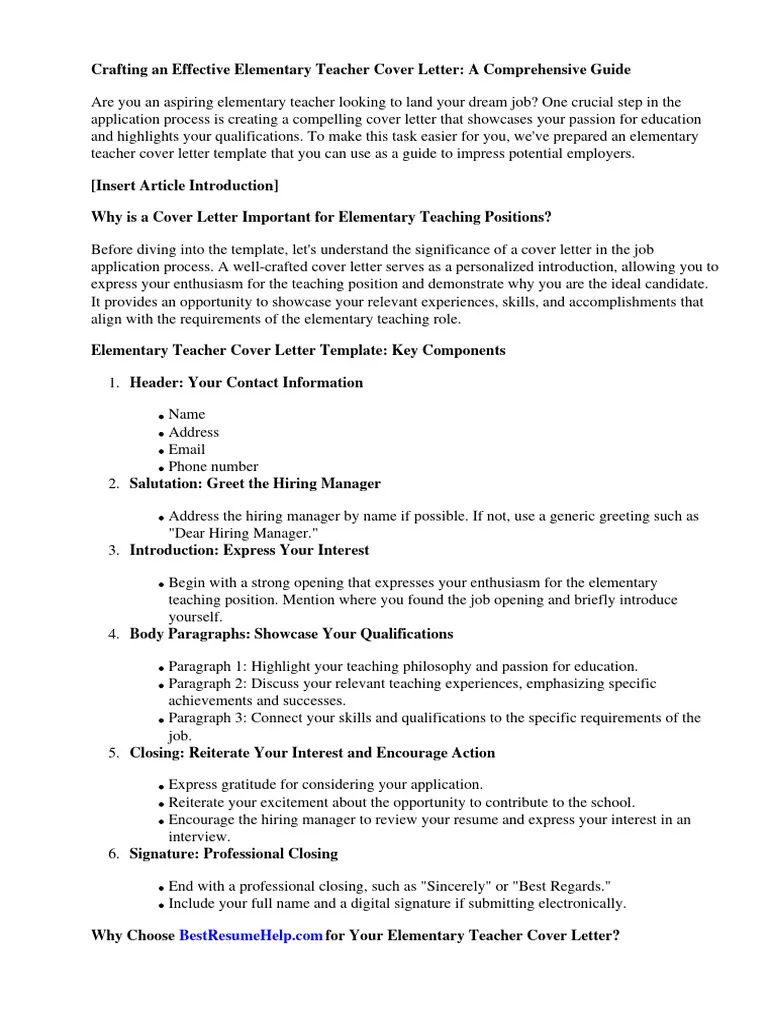Crafting a Powerful Elementary Teaching Cover Letter
Your cover letter is your first opportunity to make a positive impression on a potential employer. It serves as a vital introduction, allowing you to highlight your key qualifications, skills, and experiences in a concise and compelling manner. A well-crafted cover letter isn’t just a formality; it’s a strategic tool to capture the attention of the hiring committee and persuade them to consider your application further. This initial document sets the tone for your entire application, influencing whether or not you’re selected for an interview. A strong cover letter demonstrates your commitment and dedication to the specific elementary teaching position, and it gives you the chance to differentiate yourself from other candidates. By carefully constructing each element of your cover letter, you increase your chances of advancing to the next stage of the hiring process and ultimately securing the elementary teaching position of your dreams.
Understanding the Purpose of Your Cover Letter
The primary purpose of your cover letter is to persuade the reader, usually a school principal or hiring manager, that you are the ideal candidate for the elementary teaching position. It’s more than just a summary of your resume; it’s an opportunity to articulate why you are the perfect fit for the role and the school’s specific needs. Your cover letter should showcase your personality, your enthusiasm for teaching, and your understanding of the school’s mission or values. It allows you to expand on your qualifications, providing context and depth that a resume alone cannot offer. The cover letter also allows you to demonstrate your writing skills and attention to detail, essential qualities for an elementary school teacher. Furthermore, it’s your chance to address specific requirements or preferences mentioned in the job posting, further demonstrating that you’ve tailored your application to their specific needs and that you have taken the time to research and understand what they are looking for in a teacher.
Highlighting Your Qualifications

When highlighting your qualifications, focus on the experiences and skills that directly relate to the elementary teaching position. Start by clearly stating your teaching credentials, such as your degree in education, teaching certifications, and any specializations. Then, emphasize any relevant experience, such as student teaching, previous teaching roles, or volunteer work with children. Quantify your achievements whenever possible. For instance, instead of saying “I improved student test scores,” state “I improved student test scores by 15% in reading comprehension.” Highlight any awards, recognitions, or positive feedback you have received from supervisors, mentors, or students. Mention any specialized training or workshops you’ve completed, such as those related to specific teaching methods, technologies, or student needs. Tailor your examples to match the job description and the specific needs of the school, demonstrating that you are a well-rounded and prepared candidate capable of making a significant contribution to their educational environment.
Showcasing Your Relevant Skills
Elementary teaching requires a diverse skill set, and your cover letter is where you showcase them. Focus on the skills most relevant to the position, such as lesson planning, classroom management, and communication. Describe your experience in creating engaging and effective lesson plans that cater to different learning styles and abilities. Highlight your ability to create a positive and productive classroom environment through effective classroom management techniques. Detail your experience communicating with students, parents, and colleagues, emphasizing your ability to build strong relationships and collaborate effectively. Include examples of how you’ve differentiated instruction to meet the needs of diverse learners, whether it’s through small group activities, individualized learning plans, or the use of technology. Showcase your proficiency in using educational technology and other resources to enhance learning. Furthermore, remember to include skills such as organization, problem-solving, and a demonstrated ability to adapt and be flexible, which are critical for success in a dynamic classroom setting.
Emphasizing Your Passion for Education
Your cover letter is an excellent platform to convey your passion for education. Share your enthusiasm for teaching, your love for working with children, and your commitment to fostering a positive learning environment. Talk about what inspires you about teaching, such as the opportunity to make a difference in students’ lives, the joy of seeing them learn and grow, or the satisfaction of contributing to their intellectual and personal development. Describe your educational philosophy, detailing your approach to teaching and your belief in the importance of creating a supportive and inclusive classroom. Share specific examples of how you have gone above and beyond to support your students’ success. This could include tutoring, mentoring, or creating extracurricular activities. By showcasing your genuine passion, you demonstrate that you are not just looking for a job but that you are a dedicated educator committed to making a meaningful impact on students’ lives. This personal connection helps you stand out and helps the hiring committee see your authentic self.
Researching the School and Tailoring Your Letter

Before submitting your cover letter, thoroughly research the school and tailor your letter to align with their values and mission. Visit the school’s website to learn about their curriculum, educational philosophy, and any special programs or initiatives. Read about the school’s mission statement and vision. If possible, try to learn about the school’s culture and the specific needs of the student population. Demonstrate your understanding of the school’s values and how you can contribute to their goals by mentioning specific programs, initiatives, or aspects of the school that appeal to you. Address any specific requirements or preferences mentioned in the job posting, such as experience with a particular teaching method or technology. Customize your letter to showcase your relevant experiences and skills, making it clear that you are a good fit for the school’s specific needs. This level of personalization demonstrates your initiative and your genuine interest in the position, setting you apart from candidates who have sent generic applications.
Demonstrating Classroom Management Abilities
Classroom management is a crucial skill for elementary teachers, and you must demonstrate your abilities in your cover letter. Describe your experience creating and maintaining a positive and structured classroom environment. Highlight the specific strategies you use to establish clear expectations, routines, and procedures. Explain your approach to handling disruptive behaviors, emphasizing your ability to foster a respectful and inclusive classroom. Provide examples of how you have successfully addressed behavioral challenges and promoted a positive learning atmosphere. Mention any specific classroom management models or strategies you have used, such as positive reinforcement, restorative justice, or behavior modification techniques. Your goal is to give the hiring committee confidence that you can effectively manage a classroom, minimize disruptions, and create a safe and supportive environment where all students can thrive. This includes your ability to foster strong relationships with students and parents. Ultimately demonstrating that you create a learning environment that promotes respect, responsibility, and academic success.
Illustrating Experience with Specific Teaching Methods
Showcase your experience with specific teaching methods that are relevant to elementary education. Highlight your familiarity with strategies like differentiated instruction, project-based learning, or inquiry-based learning. Describe your experience using these methods to meet the diverse learning needs of your students. Include examples of how you have implemented these methods in your classroom and the results you achieved. Explain how you adapt your teaching to different learning styles and abilities, and mention any experience with incorporating technology into your lessons. Demonstrate your ability to create engaging and effective lessons that promote student participation and critical thinking. Tailor your examples to match the job description, emphasizing any specific teaching methods or curriculum frameworks mentioned in the posting. By illustrating your experience with specific teaching methods, you assure the hiring committee that you are prepared to implement these techniques in their classrooms, positively impacting students.
Including a Compelling Call to Action

Your cover letter should conclude with a strong call to action. Reiterate your interest in the elementary teaching position and express your enthusiasm for the opportunity. Clearly state your desire to be interviewed and your availability for an interview. Provide your contact information, including your phone number and email address. Thank the reader for their time and consideration. End on a positive note, reinforcing your commitment to providing high-quality education and making a difference in the lives of young students. If you have any relevant links, like a website or portfolio, consider including them. A compelling call to action encourages the hiring manager to take the next step and invite you to interview. Ensure you express your eagerness to discuss your qualifications further and demonstrate your readiness to contribute to the school community.
Proofreading and Formatting Your Cover Letter
Before submitting your cover letter, meticulous proofreading and proper formatting are essential. Carefully proofread your letter for any grammatical errors, spelling mistakes, and typos. Have a friend, mentor, or career counselor review your letter for clarity and accuracy. Pay attention to the formatting of your cover letter. Use a professional font, such as Times New Roman or Arial, and maintain consistent font sizes and spacing throughout the document. Ensure your letter is well-organized, with clear headings and paragraphs that are easy to read. Use a professional tone and avoid overly casual language. Keep your letter concise and focused, aiming for no more than one page. Proofread the letter one last time before submitting it, ensuring it presents you as a polished and professional candidate. A well-proofread and properly formatted cover letter demonstrates your attention to detail and respect for the hiring process, and it increases the likelihood that your application will be favorably reviewed.
